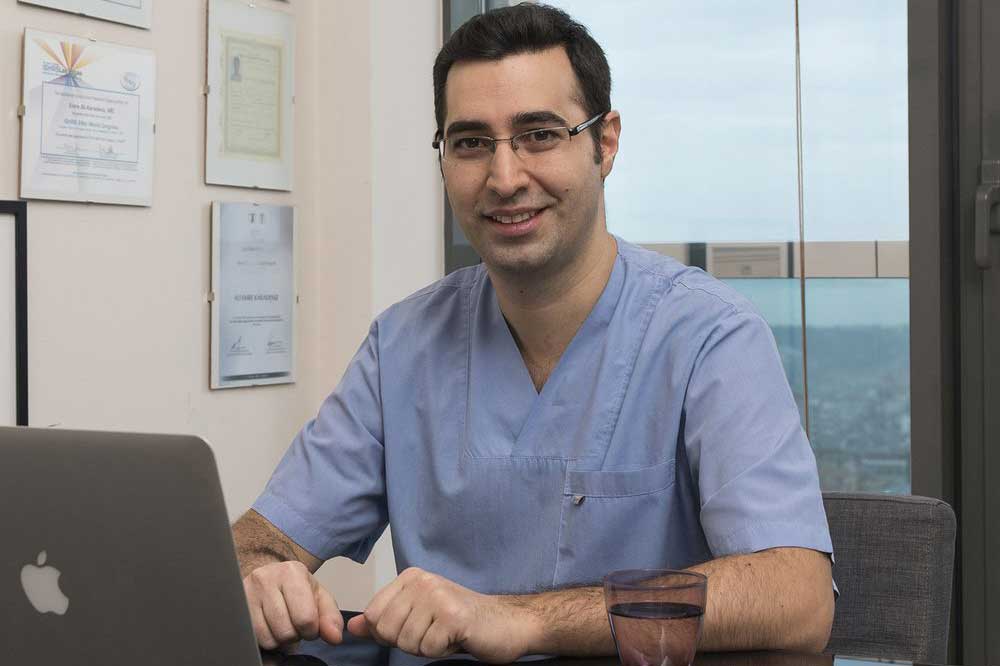
Hair loss in women is a more complex topic than in men, because it is frequently associated with other medical conditions.
The priority in female hair loss patients is to eliminate possible systemic and dermatologic diseases that will prevent a hair transplant from succeeding.
Thorough dermatologic and laboratory analysis may be necessary.

Female hair loss that is not associated with systemic and dermatologic diseases can be presented in two different ways: it can either be male pattern baldness which means it will be seen as a receding of the hairline and/or thinning at the vertex or it can be female pattern which is seen as a diffuse thinning all across the top of the head usually leaving the hairline intact. These types of hair losses in women are rarely as severe as in males, thus hair transplantation in women is usually aimed at increasing density at thinning areas.

Due to hair style and social status, most women can not tolerate totally shaving their hair for a hair transplant, therefore unshaven hair transplant options may be preferred. FUT appears to be the preferred option in most female patients due to its advantage of being able to perform unshaven. Issues related to the linear scar caused by FUT is also a lesser concern in females than males because chances of using the hair shaven or very short are unlikely. FUE can also be performed by choosing the window shave option at the donor area.
Since surgical hair restoration is based on taking hair follicles from a healthy donor area with good density, the priority is to find out if such a donor area actually exists.
For this, the cause of hair loss should either be a local problem that doesn’t effect all the hairs or it should be a systemic disease that has been cured and no longer effects the remaining follicles; otherwise a hair transplant will be doomed to failure.
No. A surgeon must first confirm that you still have a donor zone whose follicles are unaffected by the underlying cause of loss. If a systemic or active scalp disease is still attacking hair, moving follicles would only shift the problem. Comprehensive blood work, hormone panels, and trichoscopic mapping help rule out conditions such as uncontrolled thyroid disease, iron deficiency, or active alopecia areata before surgery is scheduled.
The clinic orders a CBC, ferritin, thyroid profile, vitamin D, hormonal assays (DHEA-S, free testosterone, prolactin), and occasionally autoimmune markers. A dermatologist also inspects the scalp for inflammatory disorders. This dual approach—laboratory and clinical—ensures that transplanted follicles will not face hostile local or systemic factors after placement.
Male-pattern loss in women produces a recession at the temples or a bald spot on the crown, leaving the rest of the top relatively stable. Female-pattern loss is diffuse, thinning the central part line while sparing the frontal hairline. Because diffuse loss can involve the entire top, surgeons often focus on density improvement rather than complete coverage, and they harvest only from zones confirmed to be resistant to miniaturisation.
Usually not. Most female patients choose an unshaven FUT, where the donor strip is taken beneath existing length and the top remains intact. If FUE is preferred, the team can shave narrow windows that hide under surrounding hair, so day-to-day appearance changes very little.
FUT allows surgeons to harvest thousands of follicles in one session without clipping the donor zone, which preserves hairstyle and avoids multiple scattered extraction points. Linear scar visibility is minimal because most women keep their hair long enough to cover the suture line, and trichophytic closure lets hair grow through the scar for added concealment.
Female sessions usually range from 1,200 to 2,000 grafts—enough to thicken part lines or restore a mild vertex deficit. The exact count depends on donor density, calibre, and the surface area of concern. Over-harvesting is avoided to keep options open for future procedures should loss progress.
Expect a shedding phase in weeks 2-4 as transplanted shafts fall out with their scabs. New growth becomes visible around month 3, gains length through month 6, and reaches full cosmetic impact between months 9 and 12. This timeline mirrors that of male patients; gender does not alter follicle biology once medical factors are controlled.
No. Finasteride is rarely used in pre-menopausal women, but topical minoxidil, low-dose oral minoxidil, or spironolactone can stabilise native hair and protect your surgical outcome. Your surgeon and dermatologist will tailor a regimen that suits your hormonal status and family-planning goals.
You may, but timing matters. Pregnancy-related hormonal shifts can accentuate shedding (telogen effluvium), temporarily masking the transplant’s benefit. Many surgeons advise completing the procedure at least six months before trying to conceive to allow the grafts to anchor and mature.
Complications are uncommon but include temporary shock loss of surrounding hair, prolonged redness, donor-site numbness, or a widened linear scar if FUT tension is high. Choosing an ABHRS-certified surgeon who routinely treats female patients greatly reduces these risks through meticulous planning and closure technique.